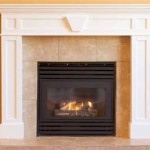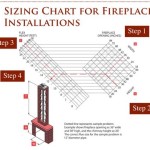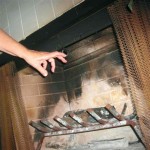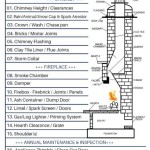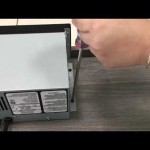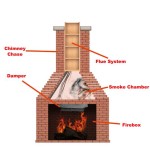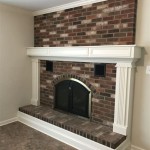TV Mount Above Fireplace Mantel: Considerations and Best Practices
Mounting a television above a fireplace mantel is a popular design choice, providing a focal point for a living room and potentially saving space. However, this installation presents unique challenges that require careful consideration to ensure both functionality and safety. Factors such as heat exposure, viewing angles, cable management, and structural integrity must be evaluated before undertaking this project. This article will explore the critical aspects of mounting a TV above a fireplace mantel, focusing on best practices to achieve a safe and aesthetically pleasing result.
Assessing Heat Exposure
The primary concern when mounting a TV above a fireplace is the potential for heat damage. Fireplaces, whether gas, electric, or wood-burning, generate significant heat that can rise and negatively impact the electronic components of a television. Excessive heat exposure can lead to decreased lifespan, performance issues, and even complete failure of the device. Therefore, mitigating heat exposure is paramount.
Several factors influence the amount of heat reaching the TV. These include the type of fireplace, the design of the mantel, and the distance between the fireplace and the TV. Gas fireplaces tend to produce less direct heat than wood-burning fireplaces, although they still contribute to increased ambient temperature. Electric fireplaces, while often perceived as safer, can also radiate heat upwards, particularly those with a supplemental heating function.
The mantel plays a crucial role in deflecting heat. A deep mantel provides a barrier, directing heat outwards and away from the wall above. A shallow mantel, conversely, offers minimal protection. In situations with a shallow or non-existent mantel, alternative heat deflection methods may be necessary. These can include installing a heat shield between the fireplace and the TV mount, or utilizing a specialized TV mount designed for above-fireplace installations that incorporates heat dissipation features.
The vertical distance between the fireplace opening and the bottom of the TV is another critical factor. The greater the distance, the less direct heat exposure the TV will experience. A general guideline suggests maintaining a minimum distance of 12 inches, but this should be adjusted based on the fireplace type, mantel design, and manufacturer recommendations for the TV. Monitoring the temperature above the mantel during fireplace operation is advisable. An inexpensive infrared thermometer can be used to measure the surface temperature of the wall and the back of the TV, providing valuable data for assessing potential heat issues. If temperatures consistently exceed the TV manufacturer's recommended operating range, further heat mitigation strategies are essential.
Furthermore, consider the ventilation around the television itself. Ensure that the back of the TV has adequate clearance from the wall to allow for proper airflow. Obstructing the ventilation ports can exacerbate heat buildup and increase the risk of damage. Using a tilting TV mount can provide additional space for ventilation and allow for adjustments to optimize viewing angles.
Optimizing Viewing Angles
Mounting a TV too high can result in an uncomfortable viewing experience, leading to neck strain and eye fatigue. The ideal viewing angle places the center of the screen at or slightly below eye level when seated. When mounting above a fireplace mantel, this optimal viewing height is often compromised due to the height of the mantel and the available wall space.
Careful consideration should be given to the height of the mantel, the size of the TV, and the typical seating arrangement in the room. Measure the distance from the floor to the eye level of a person seated in the primary viewing location. Use this measurement as a guideline for determining the optimal height for the center of the TV screen. If this height falls significantly above the mantel, alternative mounting locations should be explored.
Tilting TV mounts can help to compensate for suboptimal viewing angles. A tilting mount allows the TV to be angled downwards, improving the viewing experience for those seated below. The degree of tilt required will depend on the height of the TV and the distance from the seating area. It is important to choose a tilting mount with a secure locking mechanism to prevent the TV from shifting or tilting excessively. Full-motion mounts, which allow for both tilting and swiveling, offer even greater flexibility in adjusting the viewing angle, but they also tend to be more expensive and require more robust wall mounting.
Before permanently mounting the TV, it is advisable to temporarily position it at the intended height and angle to assess the viewing experience. Use cardboard or other materials to simulate the size and position of the TV, and sit in the primary viewing location to evaluate the comfort and clarity of the image. Adjust the height and angle as needed until a comfortable and optimal viewing experience is achieved.
The size of the TV also influences the optimal viewing distance. Larger TVs require greater viewing distances to avoid eye strain. If the seating area is relatively close to the TV, mounting a smaller screen might be preferable to maintain a comfortable viewing experience. Consult viewing distance charts and guidelines provided by TV manufacturers to determine the appropriate screen size for the viewing distance in the room.
Addressing Cable Management and Structural Support
A clean and professional TV installation requires careful cable management. Exposed cables detract from the aesthetic appeal of the setup and can pose a safety hazard. Furthermore, ensuring adequate structural support is crucial to prevent the TV from falling and causing damage or injury.
Hiding cables within the wall is the most effective way to achieve a clean and uncluttered look. This can be accomplished by installing in-wall cable management kits, which typically include a conduit or cable pass-through device that allows cables to be routed through the wall cavity. It is essential to ensure that the cables used are rated for in-wall use (CL2 or CL3 rated) to meet safety codes. Alternatively, surface-mounted cable raceways can be used to conceal cables along the wall. These raceways are available in various colors and styles to blend in with the decor.
Before running cables through the wall, it is crucial to identify the location of any electrical wiring, plumbing, or other obstructions. Using a stud finder with an AC wire detection feature can help to avoid drilling into live wires. If unsure, consult a qualified electrician or contractor to ensure that the wiring is done safely and according to local codes.
The structural integrity of the wall is paramount when mounting a heavy TV. Most TV mounts are designed to be attached to wall studs, which provide the necessary support to hold the weight of the TV. Use a stud finder to locate the studs behind the drywall. Mark the stud locations and ensure that the TV mount is securely attached to the studs using appropriate lag bolts or screws. If the studs are not spaced appropriately for the TV mount, a mounting plate can be used to span the distance between the studs and provide a solid mounting surface.
In situations where wall studs are not accessible, such as when mounting to a brick or concrete wall, specialized anchors are required. These anchors can provide sufficient holding power for a heavy TV, but it is crucial to choose anchors that are rated for the weight of the TV and the type of wall material. Follow the manufacturer's instructions carefully when installing these anchors. A professional installer can provide guidance on selecting the appropriate anchors and ensuring a secure installation.
Finally, consider the weight capacity of the mantel itself. If the mantel is intended to support decorative items or other objects, ensure that it is structurally sound enough to handle the additional weight. Reinforce the mantel if necessary, and avoid placing excessively heavy items on it.

Can I Mount My Tv Above The Fireplace

Can I Mount My Tv Above The Fireplace

Safely Mount A Tv Above An Electric Fireplace Touchstone Home S Inc

Tmo100a Mount Tv Above Fireplace Mountable 55 Inches To 65 Tranquil

Everything You Need To Know About Tv Mounts For Fireplaces

Mantelmount Mm750 Pro Above Fireplace Pull Down Tv Mount Ca

Mounting A Tv Over The Fireplace Common Myths Busted Cepro

ᑕ❶ᑐ What To Consider Before Mounting A Tv Above Fireplace

3 Alternatives To Mounting Your Television Above The Fireplace Avs

Placing A Tv Over Your Fireplace Design Ideas Classic Living Room Home Family
Related Posts

